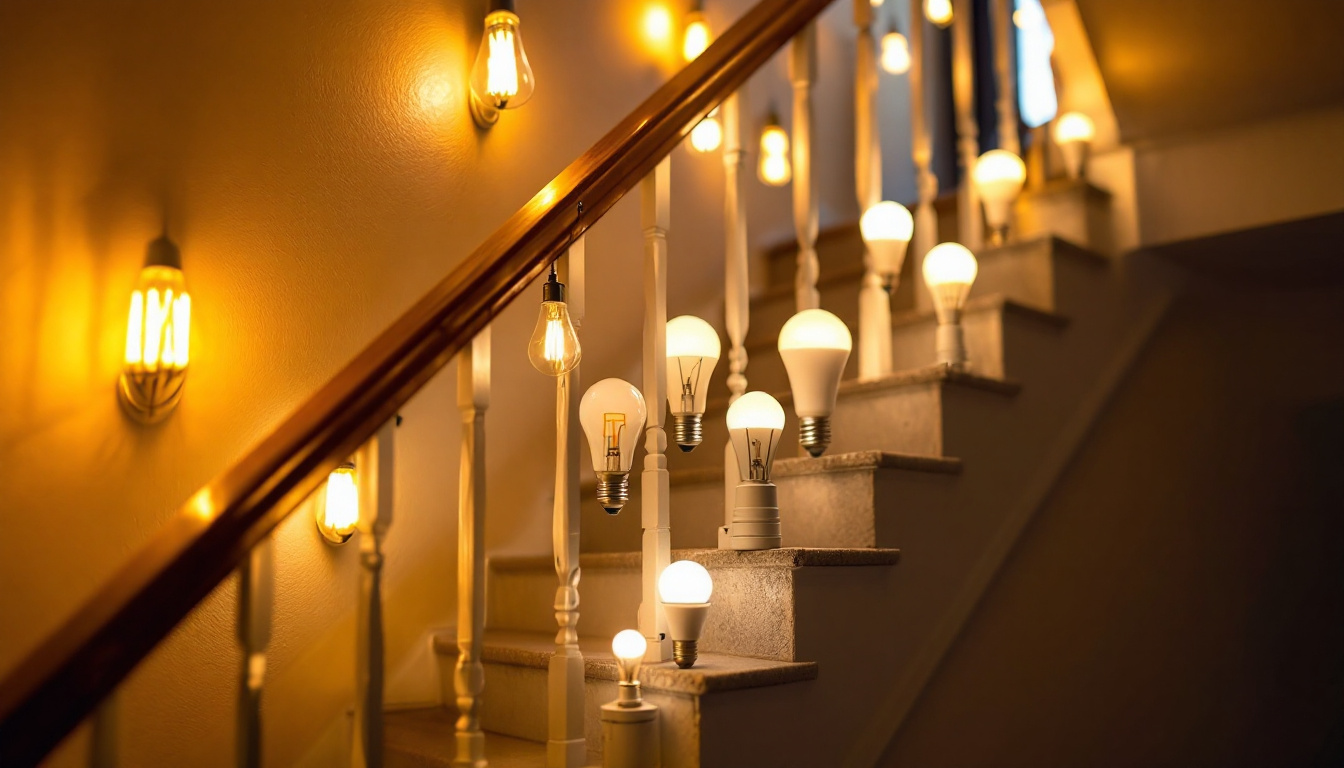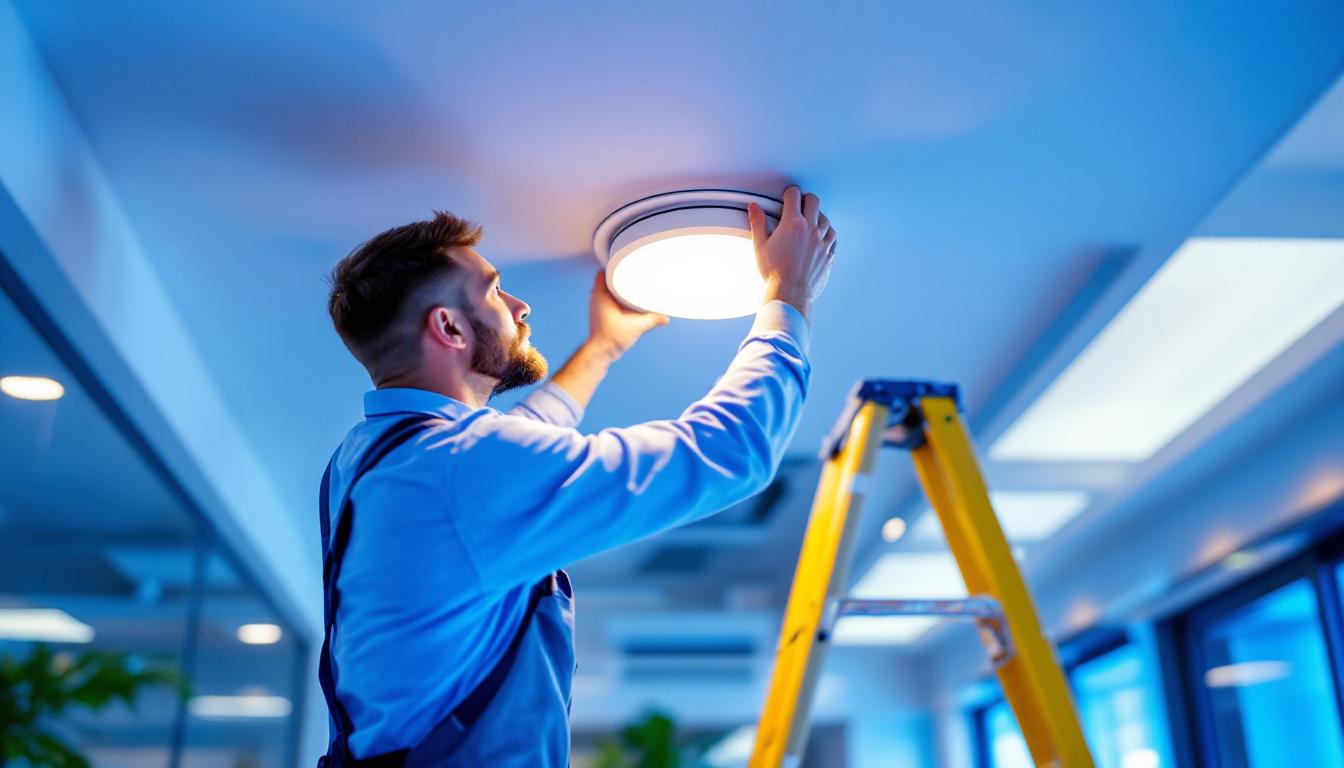
In the realm of lighting, understanding the components that contribute to the functionality and efficiency of lighting systems is crucial for contractors. One such component is the ballast, a device that plays a significant role in the operation of various lighting technologies. This article delves into the concept of ballast, its compliance requirements, and essential insights that lighting contractors should be aware of to ensure optimal performance and adherence to regulations.
Ballast is an electrical device that regulates the current to fluorescent and HID (High-Intensity Discharge) lamps. It provides the necessary starting voltage and limits the current during operation, ensuring that the lamp functions efficiently and safely. Without a ballast, the lamp could draw excessive current, leading to overheating and eventual failure.
There are primarily two types of ballasts: magnetic and electronic. Magnetic ballasts are the traditional option, utilizing electromagnetic fields to control the current. They are generally heavier and less energy-efficient compared to their electronic counterparts.
Electronic ballasts, on the other hand, are more modern and offer several advantages. They are lighter, more energy-efficient, and provide better performance in terms of flicker reduction and lamp life extension. Understanding the differences between these types is essential for contractors when selecting the appropriate ballast for specific lighting applications.
The functionality of a ballast extends beyond merely regulating current. It also plays a crucial role in the starting process of lamps. For instance, when a fluorescent lamp is turned on, the ballast provides a high voltage to initiate the arc between the electrodes. Once the lamp is lit, the ballast reduces the voltage to a stable level, allowing the lamp to operate efficiently.
Moreover, ballasts can influence the overall performance of lighting systems. A well-chosen ballast can enhance energy efficiency, reduce flickering, and prolong the lifespan of lamps, ultimately leading to lower maintenance costs and improved lighting quality.
Compliance with regulations is a critical aspect of any lighting project. Ballasts are subject to various standards and guidelines that ensure safety, performance, and environmental considerations. Familiarity with these regulations is essential for lighting contractors to avoid penalties and ensure the longevity of their installations.
One of the primary compliance requirements for ballasts is adherence to energy efficiency standards. In many regions, regulations dictate the minimum efficiency levels that ballasts must meet. These standards are often part of broader energy conservation initiatives aimed at reducing electricity consumption and greenhouse gas emissions.
Contractors should be aware of the specific energy efficiency ratings required for the ballasts they select. Choosing compliant products not only ensures adherence to regulations but also contributes to the sustainability goals of projects, appealing to environmentally conscious clients.
In addition to energy efficiency, safety standards play a vital role in ballast compliance. Various organizations, such as Underwriters Laboratories (UL) and the International Electrotechnical Commission (IEC), establish safety guidelines that ballasts must meet. These standards address issues such as electrical safety, fire hazards, and overall product reliability.
Contractors must ensure that the ballasts they use are certified by recognized testing organizations. This certification provides assurance that the products have undergone rigorous testing and meet the necessary safety requirements, reducing the risk of accidents and liability issues.
Environmental regulations also impact the selection and use of ballasts. Some ballasts, particularly older models, may contain hazardous materials such as polychlorinated biphenyls (PCBs). The disposal of these materials is subject to strict regulations to prevent environmental contamination.
Lighting contractors should stay informed about local and national regulations regarding hazardous materials and ensure that they are using compliant ballasts. Additionally, opting for environmentally friendly products can enhance a contractor’s reputation and align with sustainable practices.
Selecting the appropriate ballast for a lighting project involves several considerations. Contractors must evaluate the specific requirements of the lighting system, including lamp type, wattage, and operational characteristics. This section outlines key factors to consider when choosing a ballast.
One of the foremost considerations when selecting a ballast is its compatibility with the lamps being used. Different types of lamps require specific ballasts to operate correctly. For instance, fluorescent lamps typically require either a magnetic or electronic ballast, while HID lamps may require specialized ballasts designed for their unique operating conditions.
Contractors should consult manufacturer specifications and guidelines to ensure that the ballast chosen is compatible with the lamps in the lighting system. Using an incompatible ballast can lead to poor performance, reduced efficiency, and premature failure of the lamps.
Understanding the wattage and voltage requirements of the lighting system is also critical. Ballasts are designed to operate within specific wattage ranges, and selecting a ballast with the appropriate wattage rating is essential for optimal performance.
Moreover, the voltage requirements of the lighting system must align with the ballast specifications. Using a ballast with an incorrect voltage rating can lead to inefficiencies, flickering, or even damage to the lamps and ballast itself. Therefore, careful attention to these details is necessary for successful installations.
In today’s energy-conscious environment, selecting ballasts with energy efficiency features is increasingly important. Many modern electronic ballasts come equipped with advanced technologies that enhance energy savings, such as dimming capabilities and smart controls.
Contractors should consider the long-term benefits of energy-efficient ballasts, including reduced energy costs and improved sustainability. Additionally, clients may be more inclined to invest in lighting systems that offer energy-saving features, making it a selling point for contractors.
Proper installation of ballasts is crucial for ensuring the longevity and efficiency of lighting systems. Following best practices not only enhances performance but also minimizes the risk of issues arising post-installation. Here are some key installation tips for lighting contractors.
One of the most important best practices is to adhere to the manufacturer’s installation guidelines. Each ballast comes with specific instructions that outline the proper installation procedures, wiring configurations, and safety precautions. Following these guidelines ensures that the ballast operates as intended and reduces the risk of complications.
Contractors should take the time to read and understand these instructions before beginning the installation process. This diligence can prevent mistakes that may lead to costly repairs or replacements down the line.
Wiring is a critical aspect of ballast installation. Incorrect wiring can lead to malfunctions, flickering lights, or even electrical hazards. Contractors should ensure that all connections are secure and that the wiring is in accordance with local electrical codes.
Using the correct gauge of wire and ensuring that connections are properly insulated can significantly enhance the safety and reliability of the installation. Additionally, labeling wires can simplify future maintenance and troubleshooting efforts.
After installation, conducting thorough testing is essential to verify that the ballast and lighting system are functioning correctly. This includes checking for proper lamp ignition, ensuring that there is no flickering, and confirming that the system operates within the expected parameters.
Testing not only helps identify potential issues early on but also provides peace of mind to both contractors and clients. A well-functioning lighting system enhances satisfaction and reduces the likelihood of callbacks for repairs.
The lighting industry is continually evolving, and advancements in ballast technology are no exception. Staying informed about emerging trends can help contractors make informed decisions and offer clients the latest solutions. Here are some future trends to watch in ballast technology.
Smart technology is making its way into various aspects of lighting, including ballasts. Smart ballasts can communicate with other devices in a lighting system, allowing for enhanced control and automation. This technology enables features such as remote monitoring, dimming capabilities, and integration with building management systems.
As smart building solutions become more prevalent, contractors who are knowledgeable about smart ballast technology will be better positioned to meet the demands of clients seeking advanced lighting solutions.
Energy efficiency will continue to be a driving force in ballast development. Manufacturers are investing in research and development to create ballasts that consume less energy while providing optimal performance. This includes innovations in electronic ballasts that further reduce energy consumption and improve overall system efficiency.
Contractors should keep an eye on these advancements, as energy-efficient products can lead to cost savings for clients and help meet regulatory requirements.
As sustainability becomes a more significant focus in the lighting industry, the environmental impact of ballast materials and manufacturing processes will gain attention. Future trends may include the development of ballasts made from recyclable materials and those that have a reduced environmental footprint.
Contractors who prioritize environmentally friendly products will not only align with industry trends but also appeal to clients who value sustainability in their projects.
Understanding ballast technology is essential for lighting contractors aiming to deliver high-quality, compliant, and efficient lighting solutions. By grasping the functionality, compliance requirements, and best practices associated with ballasts, contractors can enhance their expertise and provide valuable insights to clients.
As the industry continues to evolve, staying informed about emerging trends and technologies will empower contractors to make informed decisions and offer innovative solutions. Whether it’s selecting the right ballast, ensuring compliance with regulations, or embracing future advancements, knowledge of ballast technology is a vital component of successful lighting projects.
Ready to elevate your lighting projects with the best ballasts in the industry? Look no further than LumenWholesale, where we provide contractors with top-quality, spec-grade lighting products at unbeatable wholesale prices. Our selection of ballasts meets the highest industry standards for energy efficiency, safety, and performance. With free shipping on bulk orders, you can ensure your lighting solutions are not only compliant but also cost-effective. Don’t compromise on quality or value—Wholesale Lighting at the Best Value is just a click away. Choose LumenWholesale for a seamless purchasing experience that combines quality, affordability, and convenience.

Discover how choosing the right staircase light bulbs can significantly cut costs for lighting contractors.

Discover how pendant chandelier lighting is revolutionizing the lighting industry, offering contractors innovative solutions for design and functionality.

Discover expert tips and best practices from lighting contractors on selecting and installing solar outdoor garden lights.

Discover how incorporating drop ceiling light covers can elevate your lighting contracting business.